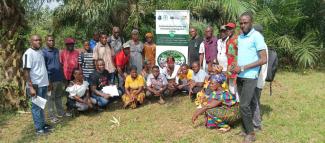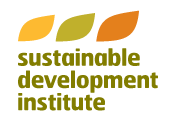
The Sustainable Development Institute (SDI) and other implementing partners have made significant progress in the implementation of the project titled: “Community-Based Forestry and Protected Area Management (CBFM): Boosting Biodiversity Conservation and Improving Livelihoods of Forest-Fringe/Forest-Dependent Communities and Groups in Liberia.”
On 27 September 2023, the Food and Agriculture Organization of the United Nations (FAO) signed Letters of Agreement (LOAs) with three local Non-Governmental Organizations (NGOs) to collaborate with FAO to implement, for ten months, key components of the Community-based Forest and Protected Area Management (CBFM) Joint Program in Liberia.
The three NGOs are: The Sustainable Development Institute (SDI), The Nature Compact (TNC), and the Foundation for Community Initiative (FCI) – under the LOAs, support the establishment and management of designated Community Forests in ten communities to go through the nine-step process to become Authorized Forest Communities, which will be led, managed, and owned by the local people as the stewards of the forest resources.
The CBFM program is a four-year (2022–2026) project, funded by the Government of Sweden through the UN Joint Program framework, and implemented by FAO and the United Nations Development Programme (UNDP) in partnership with the Forestry Development Authority (FDA) of Liberia being the key Government implementing partner.
The activities focus on strengthening forest governance systems, increasing knowledge of the values of conserving biodiversity, and improving capacity to support the sustainable management of community forests in the northwest and southeast landscapes of Liberia.
As an implementing partner, the SDI in its report covering November 2023 to March 2024, disclosed that it has created awareness on the nine steps in Glarro and Kiteapo before demarcation; posting of Socio-economic Resource and Reconnaissance (SERR) Survey and preliminary demarcation result in Kiteapo.
Others include: reminders and radio announcements for preliminary survey in Glarro and conducted preliminary survey in Glarro among others.
During the period under review, the SDI also ensured robust visibility of the project by erecting four billboards in three of the project communities, including intersections leading to these project communities.
This has increased the visibility of the CBFM projects in the adjourning communities, as evidenced by community members who always referenced these billboards and messages in community meetings.
The project promotes forest maintenance, wildlife conservation, and biodiversity through the livelihood recovery. They include: diversified livelihoods that can respond to environmental shocks and stresses; increased economic engagement of youth, women, and persons with disabilities; and sustainable utilization of local environment and forest resources to achieve economic and conservation outcomes.
